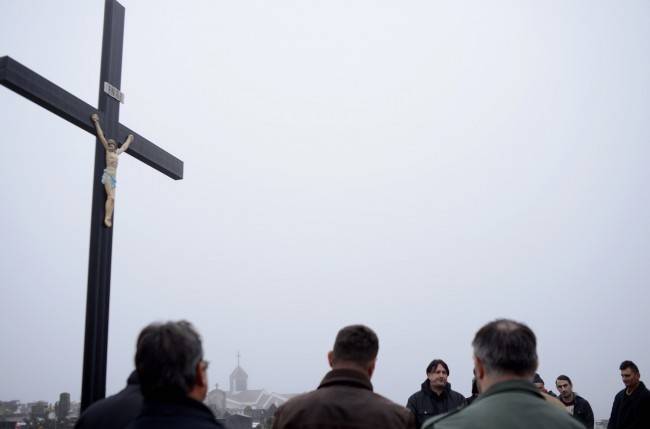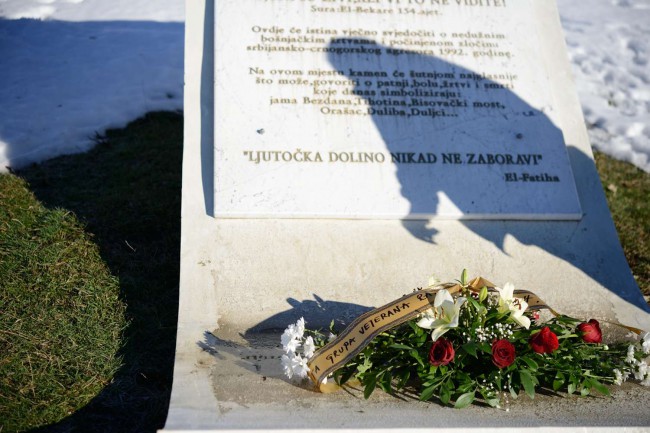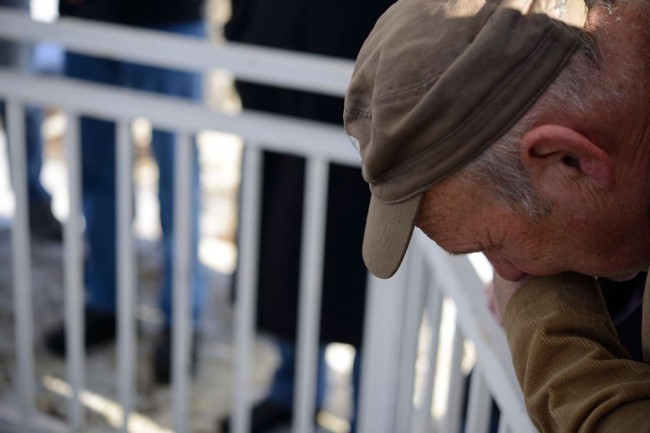Krajina denotes an area or place and is common among the Slavic peoples. Dozens of Krajinas are to be found in the territory of the former Yugoslavia, as well as in Poland, the Ukraine…
If you are from these Balkan lands and if you do not precede Krajina with a geographic determinant specifying the area you are referring to, in post cases people will think of the Krajina situated between Croatia and Bosnia and Herzegoivna, divided by a natural border – the river Una, which is also the administrative state border. This Krajina has been impressed upon the subconscious of people as the “Military” Krajina. It was settled by plan a few hundred years ago in order to provide the hinterland for the Hapsburg Empire against the Ottomans, and vice versa. The empires of the time needed people at their borders ready to come to arms at a moment’s notice. Dealing out estates and tax waivers earned them guards always watchful of the enemy. It was this militaristic concept that determined the area and remained in place even at the time of the SFRY. Even though the border between the socialist republics at the time was merely formal, the warrior spirit of “fierce Krajina men” was fostered in the belief that it could come in useful one day against an “external” enemy forever lurking, never sleeping. The 1990s will be remembered in the area as a time of strife, crimes and ethnic cleansing. The ferocity lived up to its name, but the enemy came from within.

In pursuit of our activities where we visit sites of suffering, twenty two of us war veterans from the region and activists of the Centre for Nonviolent Action Belgrade/Sarajevo visited Bihać, the administrative and economic seat of the Una-Sana Canton (USC) in the Federation of BiH. The area of the USC stretches over three Krajinas – the Bihać, Cazin and part of the Bosnian Krajina. In a wider context, all three are situated within the abovementioned “Military Krajina”, or more precisely its part within BiH. The complexity of the geographic term was reflected by the events of war. The period from 1992-1995 involved fighting between units of the Army of the Republic of Bosnia and Herzegovina (ARBiH), the Army of Republika Srpska (VRS), the Croatian Army (HV), the Croat Defence Council (HVO), the Yugoslav National Army (JNA) – later the Army of Yugoslavia (VJ), and another two formations that did not make it to 1995 and the Dayton Agreement because they had been crushed beforehand and the territories they had held were taken over by other forces. These were the Army of the Republic of Serb Krajina (VRSK) and the Popular Defence of the Autonomous Province of Western Bosnia (NOAPZB). There was also a series of police, special and paramilitary units directed to this region as needed. Here I must relate that apart from Bihać, we were also to visit Velika Kladuša. A town still labouring under the legacy of the war conflict within one ethnic and religious community, that of the Bosniaks-Muslims.
The consequences of this tragic conflict are evident and the struggle to gain the upper hand in this town has continued through political activities. Coalitions of parties representing opposing political options from the time of the war are formed, which results in fractions within themselves, with parties fragmenting to form new parties that label the original ones as treacherous, as having let their people down and forgotten the casualties of the conflict. Apart from the municipal level, this conflict is also reflected at the cantonal level – mayors are deposed, assemblies proclaimed illegitimate, political opponents accuse each other of unconstitutional action. The confusing political situation has a strong impact on all other social spheres. Economic development is negligible, the unemployment rate is on the rise, especially among young people. Many decide to seek a better life abroad, and there is a trend of emigrating to Western Europe and the US.
In planning our visit to Velika Kladuša, we held a joint meeting with veterans of ARBiH and NOAPZB gathered around veterans associations stemming from these wartime formations. The meeting was attended by the secretary of the war victims association, who is also a member of the Velika Kladuša Municipal Council. We reached an agreement about a joint visit to pay our respects at the Dubrave graveyard where members of the NO are buried and to the ARBiH Memorial. This meeting was not only formal. The people there had much to say to each other about life before the conflict, living together and pleasant memories, about first contacts made after the conflict and encounters marred by heads turning away, and even a few curses and insults here and there. The time in between, the time of war, was not mentioned. It was touching to listen to them. “Do we really need people from outside to come for us to meet and talk like this, for us to visit each other’s graveyards,” one of them commented. However, just before the final arrangements were made to visit this town, the political situation became complicated and the visit was postponed. The good thing is that there is a readiness to organise the visit in the near future, and that the possibility has been initiated for these veterans organising something to help heal broken ties and build trust in the local community.
In Bihać, we first visited the Humci graveyard that holds the ARBiH Memorial to Defenders of the Town. As we approached, massive marble slabs arranged in a circle had names of fallen fighters inscribed on the outside perimeter of the circle. Walking into the circle, I realised the slabs were inscribed with names on the inside as well. Thousands of names.

One of the hosts of the visit – Almir Tutić, president of the 1992-1995 Defensive-Liberation War Veterans Federation of USC, spoke about Bihać during the war. He mentioned the strategic position of Bihać, numerous barracks, military grounds, the military airforce base, as well as reasons why the area was targeted. The fighting was brutal, with tremendous losses. Agan Elkasović, president of the War Medal Bearers of USC, spoke about the conflict between ARBiH and NOAPZB that had taken three thousand lives on each side. He is still bewildered by the escalation of violence in the conflict himself, the literal fratricide that it entailed, because there were families whose members fought on opposite sides. He ended his presentation saying words could never describe what had happened.
Franjo Grgić, president of the HVO Defence Associations Coordination of USC, took us to the central HVO memorial at the Žegar Roman Catholic cemetery. We reached the crucifix that dominates over the cemetery. Franjo explained the war journey of HVO units in the area, particularly pointing out that, as opposed to some other parts of BiH, there was never a Bosniak-Croat conflict in this area, a fact they are proud of.
Next we visited the Memorial Room dedicated to members of the Fifth Corps of ARBiH and civilians from the local community of Ribić-Orljani. Photographs with biographic data and verses from the Qur’an hang on the walls. Almir gave us a brief overview of the war period in this part of Bihać. At one point, as we were asking questions about the number of population, ethnic structure, etc., he left the room and came back with a thickish book. “Now, ask. Here I have all the data from the 1991 census,” he said and opened the book. And we got our answers. He continued his story, describing the fates of people from the photos that he know personally. And he said something worth remembering: “In war, the rich give their oxen, and the poor their sons.” That is so true, I thought. It’s clear whose “cannon fodder” is cheaper.
We then got into our cars and set off for the Bezdana pit some thirteen kilometres from Bihać. We were soon off the asphalt and going uphill along a steep macadam road used for transporting timber from the forest. We reached the plain and set off on foot towards the pit. It is covered by a memorial and there is a safety fence around the shaft that allows you to peer over and look into the eerie depths carved into the rock. It is an abyss some eighty-five meters deep. The account of the crimes committed at this site in 1992 shocked us all. Jasmin Osmankić, president of the Cantonal Federation of Associations of ARBiH and HVO Veterans with PTSD, another of our hosts in Bihać, talked about how he had gone down into the pit after the war, in 1997, to find the remains of his missing brother. He was not among the eighty-one exhumed remains. Jasmin is still searching for him. Our faces petrified, we left the plain and headed back to the hotel.
We held a joint meeting where we were joined by representatives of veterans organisations, both NOAPZB and ARBiH from Velika Kladuša, a welcome development and something that encouraged us to continue our cooperation with these associations. The meeting was also attended by Emdžad Galijašević, Mayor of Bihać, who expressed his support of our idea and objectives and have us his full endorsement. He said we could count on the assistance of the townand its institutions in our future activities in this area.

We ended our visit to Bihać with an informal tour of the museum of the First Session of AVNOJ[1] held in this town in 1942. People in this area foster the values of antifascist struggle, Almir pointed out.
All of us assessed this visit as very useful and successful. The war veterans we had been conducting peace-building activities in the past years were joined by new members, people who had been at our last Veterans’ Training held in Doboj at the beginning of June 2013. They fit in with the group so well that we felt they had always been with us. I would particularly like to point out the high level of transparency and immediacy from our hosts in Bihać who earned the respect of our whole group. We also gained new sympathisers, people that we can involve to do many more things in this area. And there is need for that. The legacy of the past filled with the violence of war still burdens the lives of these people today, almost two decades later. How to simultaneously feel pride on account of their historical warrior heritage, accepted as an inseparable part of their identity, while forging the way towards building peace, trust and cooperation is something that the people of Krajina will have to resolve for themselves and for the coming generations. We hope actions such as this one can pave the way to asking the right questions.
[1] Antifascist Council for the National Liberation of Yugoslavia